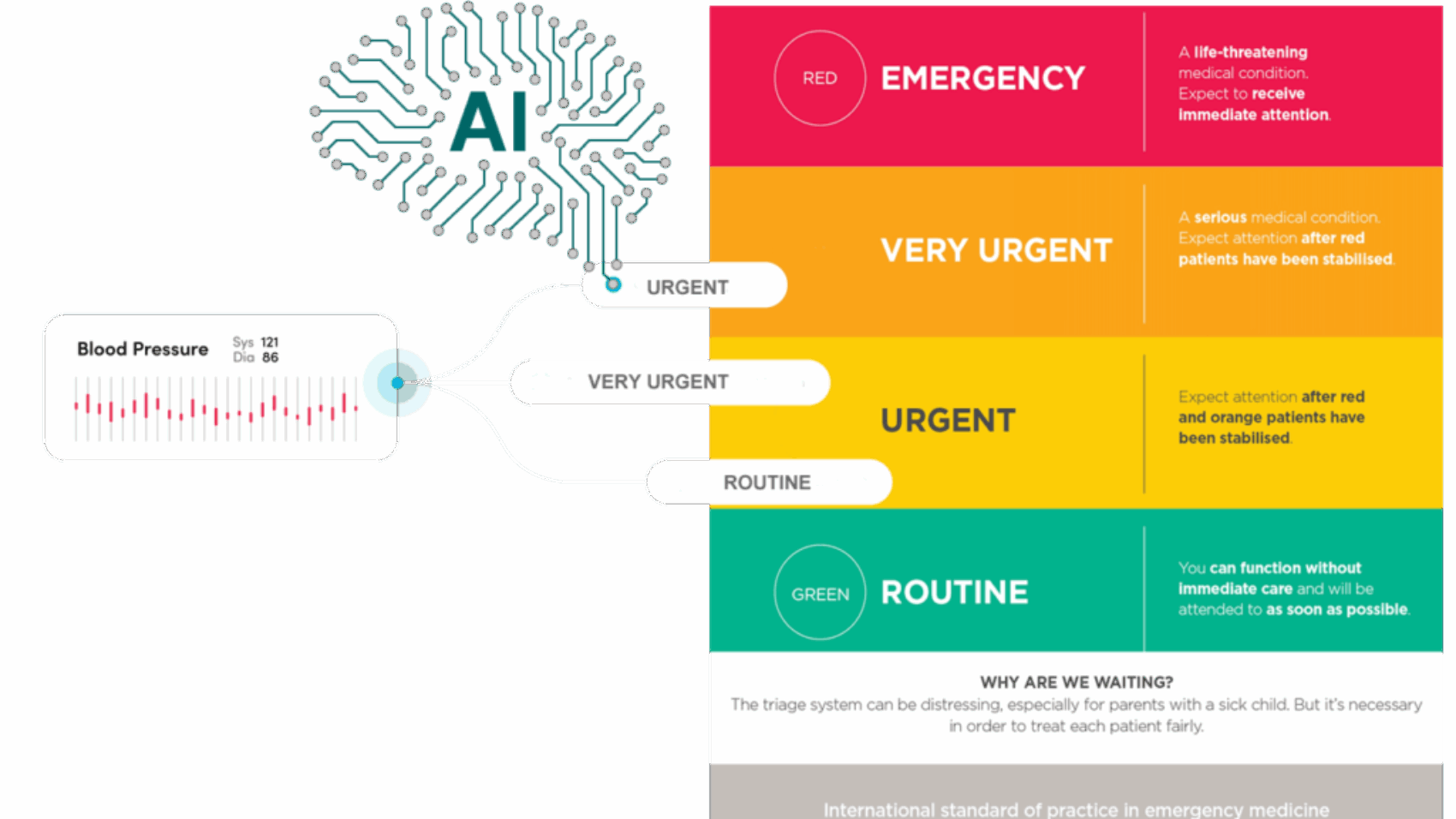Every Hospital worldwide face increasing pressure to provide high-quality care while maintaining operational efficiency. ERTriage, an AI-powered triage system, is at the forefront of addressing this challenge . By integrating real-time patient assessments and AI-driven decision support, ERTriage is reshaping how hospitals manage patient flow, reduce wait times, and optimize resource allocation.
Let’s see how ERTriage is helping hospitals improve operational efficiency, enhance patient care, and reduce costs.
1. AI-Driven Triage for Faster, More Accurate Patient Assessment
Traditionally, triage systems in hospitals rely on manual processes, leading to bottlenecks and potential delays in care. ERTriage revolutionizes this by leveraging artificial intelligence to assess patient symptoms quickly and accurately. The system collects patient data through digital interfaces, processes it in real time, and provides an initial diagnosis or categorization based on the severity of the symptoms.
This AI-driven approach allows hospitals to:
- Prioritize critical cases, ensuring faster treatment for those in urgent need.
- Reduce human error by providing consistent, evidence-based decision support.
- Decrease wait times for patients, improving overall hospital efficiency and patient satisfaction.
2. Optimizing Hospital Resources and Reducing Operational Costs
Hospitals operate under tight budget constraints, and managing resources efficiently is a constant challenge. ERTriage can optimize hospital resource allocation by streamlining the triage process and reducing unnecessary patient visits.
Key benefits include:
- Efficient Bed Utilization: By accurately assessing patients’ needs, ERTriage helps hospitals avoid overcrowding and ensures that beds are allocated to those with the most urgent medical conditions.
- Staff Efficiency: Nurses and doctors spend less time on initial patient assessments, allowing them to focus on critical care tasks and improving overall workflow efficiency.
- Cost Savings: With faster, more accurate triage and resource optimization, hospitals can reduce the costs associated with patient mismanagement and unnecessary treatments.
3. Enhancing Patient Experience and Reducing Overcrowding
Patient satisfaction is directly tied to how quickly and effectively they receive care. ERTriage enhances the patient experience by providing an immediate, accurate assessment, allowing patients to know the urgency of their condition without waiting long hours.
By reducing unnecessary hospital visits and streamlining the triage process, ERTriage helps hospitals:
- Minimize overcrowding in emergency departments, which is a common issue in many hospitals.
- Improve wait times and offer better care for patients by guiding them to the right care pathway faster.
- Empower patients by giving them timely information about their health status, which can reduce anxiety and increase trust in hospital systems.
4. Seamless Integration with Hospital Systems
For hospitals to achieve maximum efficiency, new technology must integrate smoothly with existing healthcare infrastructure. ERTriage is designed to work with hospital electronic health records (EHR) and other clinical systems, ensuring that patient data flows seamlessly across platforms.
This integration offers several advantages:
- Data Consistency: Ensures that patient information is consistent across all systems, minimizing the risk of errors.
- Improved Communication: Enhances collaboration between different healthcare providers, ensuring timely interventions and better coordinated care.
- Scalability: As hospitals expand, ERTriage adapts to increased demand, easily scaling to meet the growing needs of healthcare facilities.
5. Supporting Remote and Virtual Triage in Hospitals
With the rise of telemedicine, hospitals are increasingly adopting remote triage services to manage patient flow more effectively. ERTriage supports remote triage by offering virtual consultations and AI-powered assessments that can be accessed from anywhere.
This capability:
- Enables hospitals to manage patient intake remotely, reducing the burden on physical spaces and providing care to those who may not need to visit the hospital in person.
- Expands access to healthcare services, particularly for patients in rural or underserved areas, ensuring they receive timely care without traveling long distances.
- Integrates with telemedicine platforms, allowing hospitals to offer a hybrid model of in-person and virtual care.
6. The Future of Hospital Care with ERTriage
As hospitals continue to adapt to new technologies, ERTriage is paving the way for future advancements in healthcare delivery. The platform’s ability to adapt to emerging needs, incorporate patient data from various sources, and support AI-powered decision-making ensures that hospitals will remain at the cutting edge of medical care.
Looking ahead, ERTriage will likely expand its capabilities, offering even more personalized care solutions and improving predictive analytics to help hospitals anticipate patient needs before they arise.
Conclusion
In a healthcare environment where efficiency, accuracy, and patient satisfaction are paramount, ERTriage offers a transformative solution for hospitals. By incorporating AI into the triage process, hospitals can optimize resource allocation, improve patient outcomes, and reduce operational costs.
As the healthcare industry continues to evolve, ERTriage will remain an essential tool for hospitals looking to stay ahead of the curve and deliver the best possible care to their patients.
Ready to see how ERTriage by Carepoi can transform your hospital operations? Contact us today to schedule a demo and explore how our solution can streamline your triage process and improve patient care.

